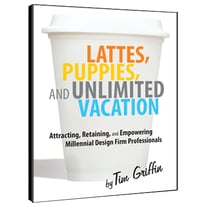 Most architecture/engineering firms are acutely aware that they are facing a long-term shortage of labor in the technical fields. Who will do the work rainmakers bring in, and where will the future leaders and rainmakers come from?
Most architecture/engineering firms are acutely aware that they are facing a long-term shortage of labor in the technical fields. Who will do the work rainmakers bring in, and where will the future leaders and rainmakers come from?
Research (SMPS Foundation) has found A/E firms have adopted various recruiting and retention strategies to solve workforce shortage issues. Here is a sampling of strategies that organizations use to recruit and retain their best employees, and to mitigate the effects of this shortage.
-
Mentor interns. Many A/E firms offer internships and mentoring as part of their recruiting program. Such programs, for instance, can involve students in charrette-style workshops that address real project issues. This can be followed by some form of office internship.
-
Reach out to Millennials. Because Millennials value rich experiences and work/life balance, companies should bring them into their offices to experience the feel and chemistry of the work environment and to highlight the collaborative and social aspects of the company culture.
-
Build employee commitment. It requires that employees have a sense of belonging; understand the mission, vision, and strategy communicated by the firm’s leaders; and develop trust and respect for their managers. A variety of retention strategies can help achieve this goal.
-
Train managers. Given the importance of managers in building employee commitment, firms should provide training and mentoring for new managers to increase their people skills.
-
Create collaborative, diverse teams. Small A/E firms tend to work collaboratively simply because people must be generalists and “wear different hats” to accomplish the work. In larger firms however. people often separate into disciplinary or departmental silos, making it a challenge to develop collaborative teams who can focus together on a client or set of issues.
-
Initiate employee development programs. Professional development programs are key to creating committed employees. The building and development company, Gilbane, implemented an informal program called Career Conversations in which employees are encouraged to meet with their supervisors to discuss career growth and enhancement. Gilbane’s HR director credits this program for improving employee retention by 40 percent.
-
Entice older employees to stay. Several A/E firms enlist older workers to act as mentors for the younger staff. Firms have also instituted much more flexibility into the work schedule, and are keeping older workers by offering part-time or other project work.
This article is an excerpt from the book, Lattes, Puppies, and Unlimited Vacation: Attracting, Retaining, and Empowering Millennial Design Firm Professionals.
 About the author: J. Tim Griffin, P.E., MBA, LEED AP is a Partner and Executive Vice President with RMF Engineering, Inc., an engineering consulting firm that works internationally.
About the author: J. Tim Griffin, P.E., MBA, LEED AP is a Partner and Executive Vice President with RMF Engineering, Inc., an engineering consulting firm that works internationally.
You also might be interested in these related blog posts:
The War for Talent: Does Your Compensation Strategy Measure Up?
From PSMJ's A/E/C Industry Summit: Cracking The Millennial Code



